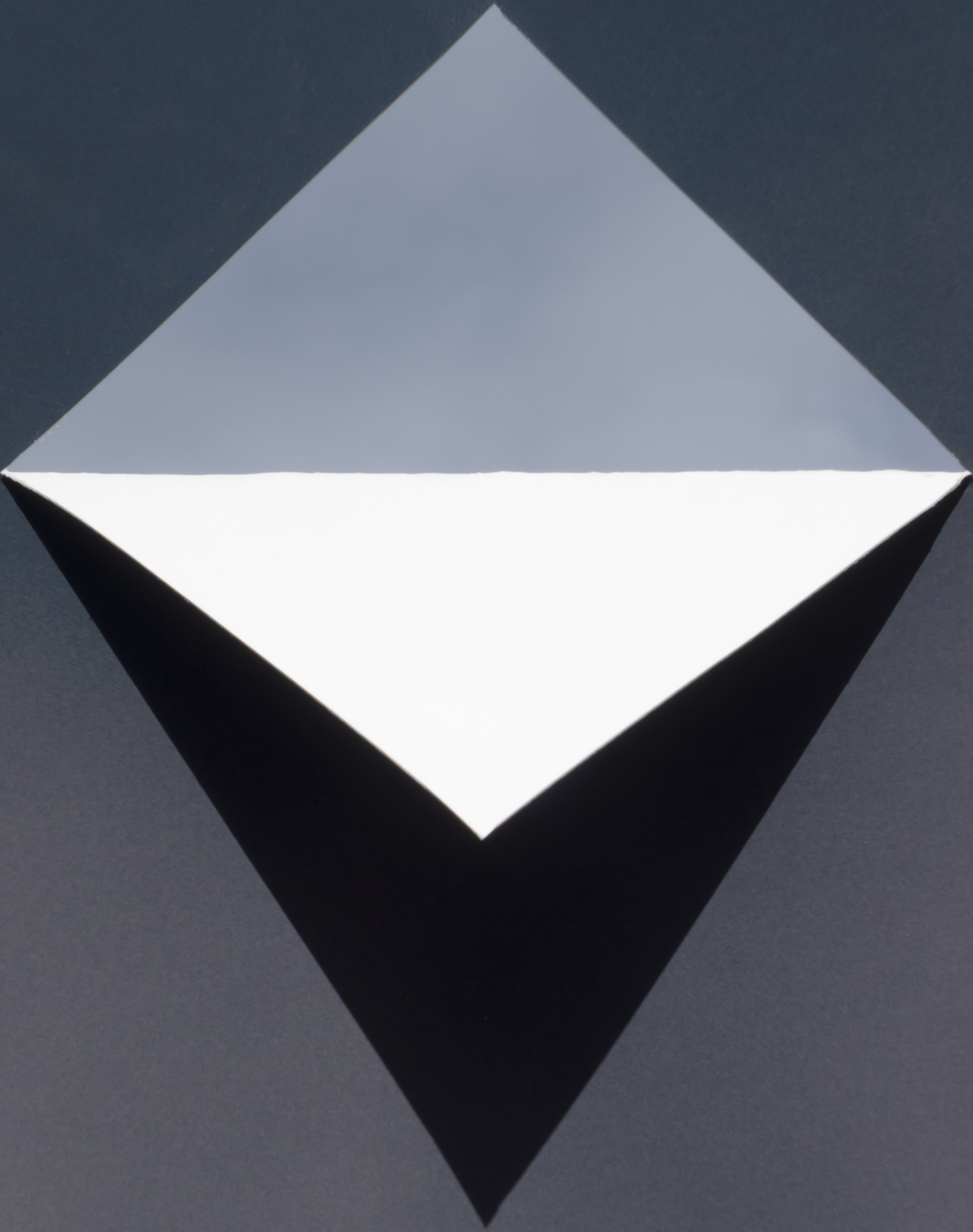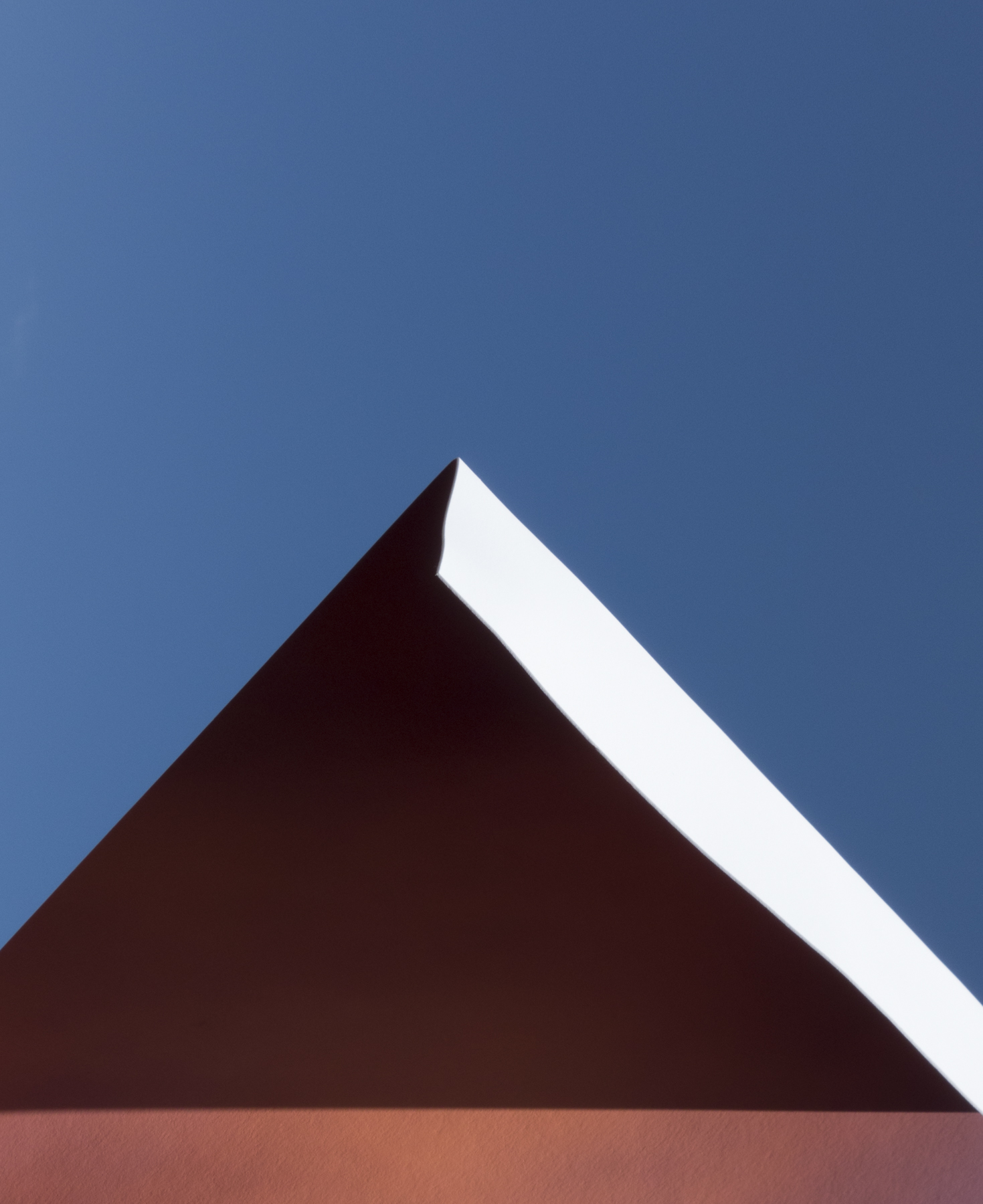Brenda Biondo
About the Artist
Brenda Biondo is a photographer whose work focuses on three distinct areas: constructed abstractions that reference atmospheric light and color; conservation issues; and the way cultural artifacts move from the past into the present. Brenda’s work has been exhibited in shows throughout the country and published in numerous publications, including The Wall Street Journal. Her photographs are in the collections of the San Diego Museum of Art, the Library of Congress, the Museum of Photographic Art, and elsewhere. A solo exhibit of her work opened at the San Diego Museum of Art in July 2017. Her book of photographs, Once Upon a Playground, was published by the University Press of New England in 2014 and is now the subject of a five-year traveling exhibit organized by ExhibitsUSA. A native New Yorker, she’s been a resident of Manitou Springs, Colorado since 1999. She is represented by Goodwin Fine Art (Denver).
-

This image is from the series “Paper Skies,” which focuses on natural light, atmospheric color and the photograph as object. Each image is created by re-photographing a folded and/or cut print of a sky image (grey clouds, blue sky or sunset close-up) in front of actual sky. (There is no post-production manipulation.) The juxtaposition of the print against the actual sky creates an abstract image that emphasizes the ambiguity between the real and the reproduced, and allows the original printed photograph to be seen in a new context as a three-dimensional geometric form. The paper on which the original image is printed transcends its role as simply a substrate for photographic imagery and becomes an active ingredient whose edges, texture and shape play a key role in the final image.
-

This image is from the series “Paper Skies,” which focuses on natural light, atmospheric color and the photograph as object. Each image is created by re-photographing a folded and/or cut print of a sky image (grey clouds, blue sky or sunset close-up) in front of actual sky. (There is no post-production manipulation.) The juxtaposition of the print against the actual sky creates an abstract image that emphasizes the ambiguity between the real and the reproduced, and allows the original printed photograph to be seen in a new context as a three-dimensional geometric form. The paper on which the original image is printed transcends its role as simply a substrate for photographic imagery and becomes an active ingredient whose edges, texture and shape play a key role in the final image.
-

This image is from the series “Paper Skies,” which focuses on natural light, atmospheric color and the photograph as object. Each image is created by re-photographing a folded and/or cut print of a sky image (grey clouds, blue sky or sunset close-up) in front of actual sky. (There is no post-production manipulation.) The juxtaposition of the print against the actual sky creates an abstract image that emphasizes the ambiguity between the real and the reproduced, and allows the original printed photograph to be seen in a new context as a three-dimensional geometric form. The paper on which the original image is printed transcends its role as simply a substrate for photographic imagery and becomes an active ingredient whose edges, texture and shape play a key role in the final image.
-

This image is from the series “Moving Pictures,” which looks at the photograph as an object in motion interacting with its environment over time and, in the process, literally blurring the line between what is real and what is reproduced. The images are created by quickly moving a folded and/or cut printed sky image while it is being re-photographed outside. The half-second exposure time generates amalgams in which the printed sky and the actual sky are merged, blending colors and shadows and revealing a synthesis that cannot be seen with the naked eye.
-

This image is from the series “Moving Pictures,” which looks at the photograph as an object in motion interacting with its environment over time and, in the process, literally blurring the line between what is real and what is reproduced. The images are created by quickly moving a folded and/or cut printed sky image while it is being re-photographed outside. The half-second exposure time generates amalgams in which the printed sky and the actual sky are merged, blending colors and shadows and revealing a synthesis that cannot be seen with the naked eye.
-

This image is from the series “Moving Pictures,” which looks at the photograph as an object in motion interacting with its environment over time and, in the process, literally blurring the line between what is real and what is reproduced. The images are created by quickly moving a folded and/or cut printed sky image while it is being re-photographed outside. The half-second exposure time generates amalgams in which the printed sky and the actual sky are merged, blending colors and shadows and revealing a synthesis that cannot be seen with the naked eye.
-

This images is from the series “Modalities,” which explores the creative process behind a photographer’s practice through re-contextualizing existing images. Because each finished piece is a digital montage composed of out-takes from the hundreds of images shot during the creation of Paper Skies and Moving Pictures, the series hints at the creative process behind a photographer’s practice by alluding to the vast number of captured images that are “rejected” by photographers in the course of editing. At the same time, the photography/painting dialogue is advanced by using the cropped out-takes as a palette of shapes and colors — geometric building blocks that are arranged into new compositions.
-

This images is from the series “Modalities,” which explores the creative process behind a photographer’s practice through re-contextualizing existing images. Because each finished piece is a digital montage composed of out-takes from the hundreds of images shot during the creation of Paper Skies and Moving Pictures, the series hints at the creative process behind a photographer’s practice by alluding to the vast number of captured images that are “rejected” by photographers in the course of editing. At the same time, the photography/painting dialogue is advanced by using the cropped out-takes as a palette of shapes and colors — geometric building blocks that are arranged into new compositions.
-

Installation shot of solo show at Goodwin Fine Art in March 2017.
-

Installation shot of “Paper Skies” series exhibited in a solo show at the San Diego Museum of Art in 2017.
